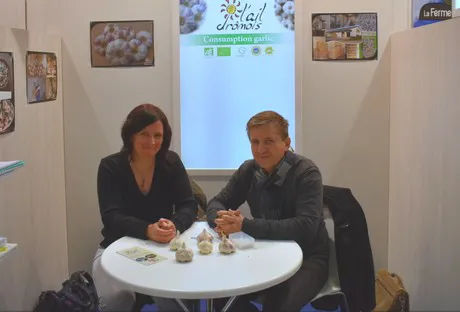Despite the strong pressure from the Spanish market through very competitive prices, the demand for French garlic is good, according to André Piallat, vice-president and commercial manager at GIE L’Ail Drômois. “We have a lot of demand because large retailers favor the marketing of French garlic, rather than other origins. But on the MIN markets such as Rungis, the pressure from the prices of foreign markets like China or Spain is clearly visible. In order to properly live from the sale of our products, we need to sell at around 2.80-3.00 euros/kilo [1.44-1.54 USD/lb], while the garlic from Spain is sold at about 1.20-1.50 euro/kilo [0.62-0.77 USD/lb]. There is very little French garlic on the MIN markets.”
French garlic vs Spanish garlic
Such a difference in prices can be partly explained by the differences between the French and the Spanish agricultural models. “Garlic production in Spain is the result of intensive industrial agriculture while in France, garlic is grown through reasoned family-based agricultural practices on small surface areas. Moreover, the French garlic producers do not benefit from CAP aids (Common Agricultural Policy).
Each year when the season starts, we must renegotiate prices with the traders, who do not easily accept to pay more for French garlic than what they pay for the Spanish product. Trade with wholesale markets is difficult, but there is better communication with retailers. The MIN markets refuse to work with the national production, favoring prices over common sense. The high demand from the large retailers in French garlic boosts the production. This allows us to maintain a decent price for the producer,” explains André.
 Aurélie Gasquet and André Piallat
Aurélie Gasquet and André Piallat
The demand for French garlic is stronger than the production
The demand from the large retailers in French garlic is increasing. “Large retailers are asking us to extend the marketing period. We are building refrigerators to meet this demand.” However, the production is still too low. “There are fewer and fewer small French producers. Garlic used to be grown on all farms, but the small structures have now disappeared in favor of large farms that benefit from CAP premiums. We have trouble developing this production because it is a cultivation that requires a large investment per hectare. It is a complicated production. A bit of bad weather can cause us a lot of damage.”
“Yet, garlic production has its advantages, responding to the current environmental issues because it requires less water given that the harvest takes place in June. Unlike other crops, it is therefore not concerned with the large irrigation needs in the summer. We meet all agro-environmental criteria to produce garlic, but we need large retailers to continue to promote the French production through their distribution networks. Because if we only dealt with traders who focus solely on prices, the French garlic production would be compromised, or even disappear.”
For more information:
André Piallat
GIE L’Ail Drômois
Z.A. de Brunelle – 26 400 Eurre, France
Phone: +33 4 75 25 10 18
Mobile: +33 6 32 26 61 45
contact@aildromois.com
www.aildromois.com
